Slideshow: Off-Balance Core Moves, A Whole New Way to Work Out

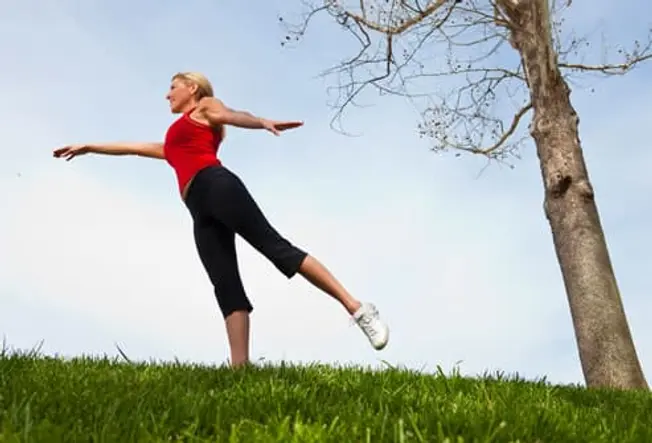
The Off-Balance Workout
Looking for a toned stomach or a better tennis game? These are two good reasons to turn your workout into a balancing act. A controlled wobble activates deep core muscles to help tighten the midsection and prepare athletes for that quick turn or lunge. Fabio Comana, MA, MS, of the American Council on Exercise, shares a few, fun core moves for better fitness.

Engage Your Abs
Before each move in our workout, first engage your abdominals by tightening them -- without holding your breath -- as if preparing to take a punch. You'll activate the core muscles surrounding your spine and tone your entire abdominal area. Engaged abs also help prevent injury when lifting. If you have a medical condition, be sure to check with your doctor before this or any new fitness program.
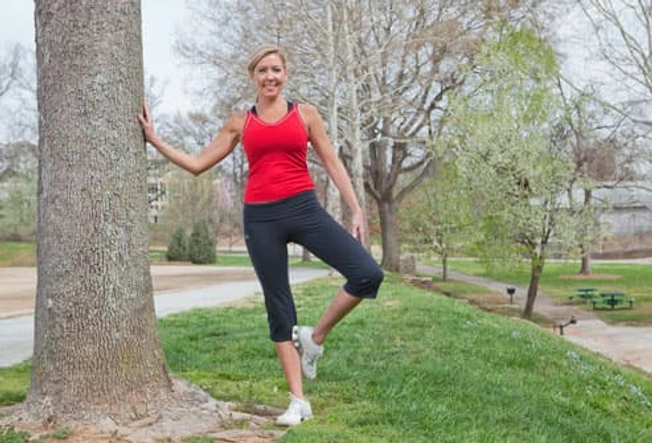
One-legged Balance
Start with this beginning move, keeping a stable chair or a wall within arms' reach. With feet together, pick up one foot -- knee facing forward or to the side. Hold the position with eyes open, then closed. Switch feet and repeat for four reps on each foot. If any move feels wrong or unsafe to you, stop and check with a trainer. Depending on your health and physical condition, some exercises may not be recommended.
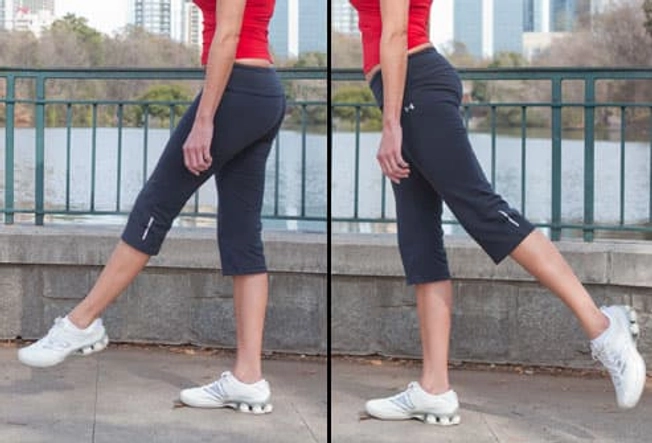
Leg Swings
Stand on your right leg and raise the left leg 3-6 inches off the floor. With arms at your sides, swing your left leg forward and backward, touching the floor for balance, while keeping your torso erect. Now, repeat the moves, but don't allow your foot to touch the ground. And finally, swing your left foot to the left side, holding your right arm out. Switch legs and repeat.
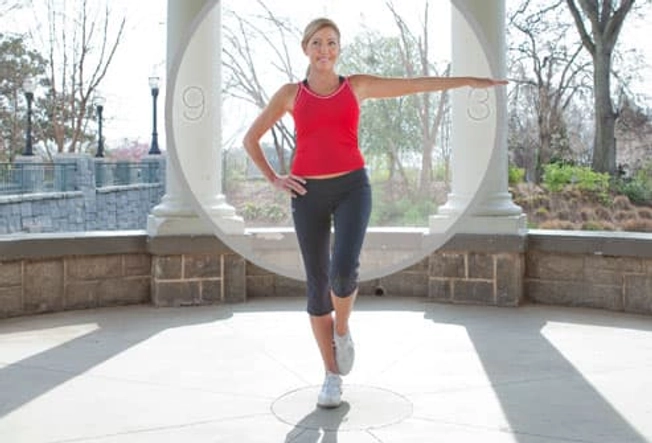
One-legged Clock With Arms
Balance on one leg, torso straight, head up, and hands on the hips. Visualize a clock and point your arm straight overhead to 12, then to the side (3), and then circle low and around to 9 o'clock without losing your balance. Increase the challenge by having a partner call out the different times to you. Switch to the opposite arm and leg and repeat.
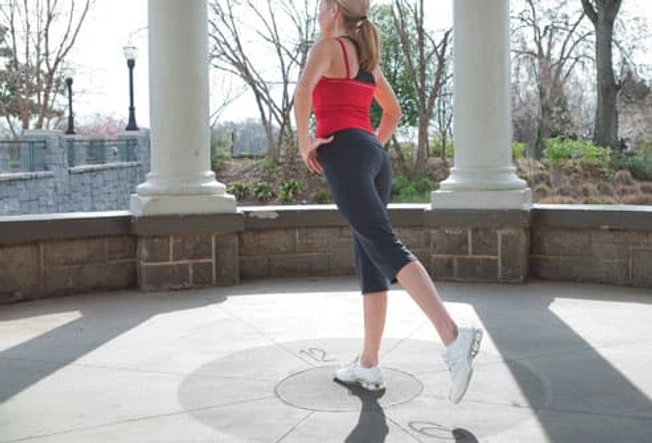
One-legged Clock With Legs
Balance on one leg, torso straight, head up, and hands on your hips. Straighten the other leg to the front, and imagine yourself as the center of a clock. Point that foot to 12, 9, and then cross over to 3 o'clock while holding your balance. Increase the challenge by having a partner shout out the different times to you. Switch to the opposite leg and repeat.
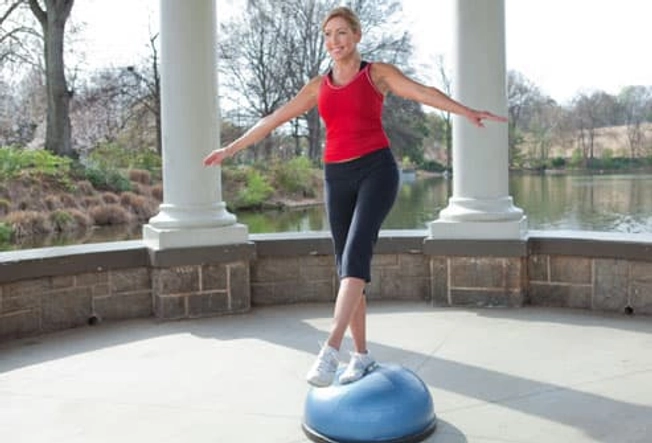
Clock on an Unstable Surface
Once you master balance moves on solid ground, try them on an unstable surface such as a BOSU platform. Stand near a wall or other support, for safety. Start in the middle of the board on two feet at first. When you feel comfortable, carefully give the one-legged clocks a try. It's harder than it looks!
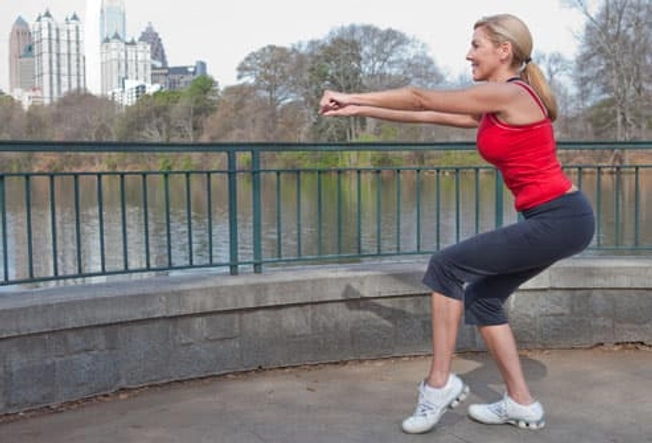
One-legged Squat
Stand with your feet hip-width apart. Point your left foot out front, just barely touching the floor for balance and push your hips back and down into this challenging one-legged squat position. Your right knee is bent, chest upright, eyes forward, and your arms out front. Slowly push up to return to starting position. Switch feet.
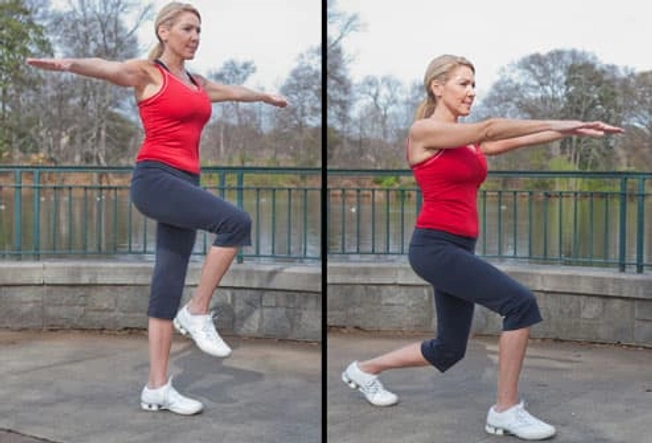
Lunge With Reach
Stand with feet together, arms straight out to the side at shoulder height. Now, lift one foot up, pause momentarily, and lunge forward. Your hips should drop down until your front thigh is parallel to the floor. Maintain a flat back and hold your arms straight in front of you. Push off with your front leg to return to starting position. Repeat on the other side.
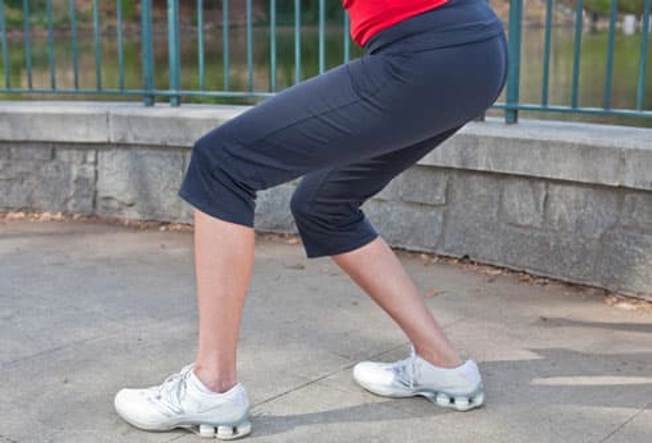
Staggered-Stance Squat
Stand with your feet shoulder-width apart, head up, and chest high. Take a staggered position by bringing the toe of one foot, even with your other heel. Hold this stance as you sink into a squat, but don't let your heels pull up off the ground! This move requires a shift in balance and readies you for more dynamic moves.

Single-Leg Dead Lift
Balance on your left foot, engage the abs, and bend forward at the hips while reaching toward the ground with your right hand. Hold on to a 5- to 10-pound weight and raise your right leg behind you for counterbalance. Tighten the buttocks as you return to the starting position. Keep your knee relaxed and back flat throughout the movement. Switch legs.
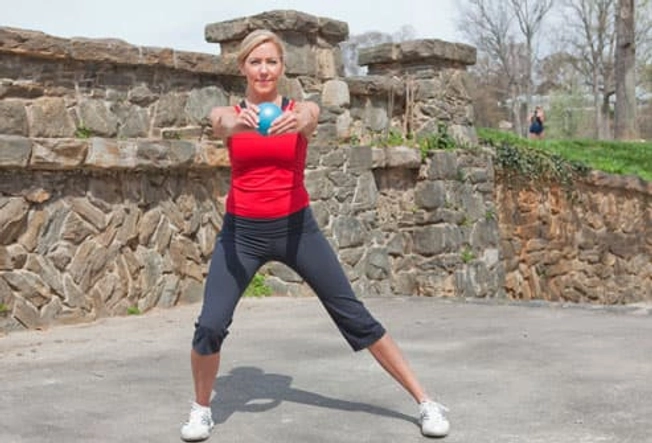
Side Lunge With Front Reach
Stand with feet hip-width apart. Hold a ball with both hands, elbows bent, in front of your chest. Step to the right and press your hips down and back, as you push the ball out in front of you. Keep your left foot flat on the floor. Now, push off with your right leg, pull the ball back in towards you, and return to the starting position. Repeat on the opposite side.
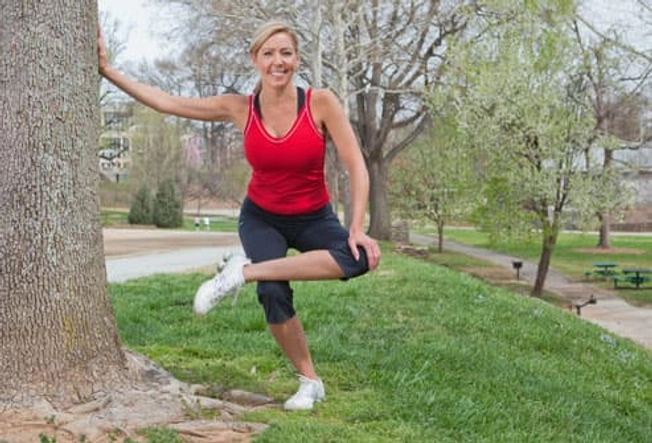
Runners' Weak Gluteus Medius
One-legged exercises are invaluable for runners. They strengthen the gluteus medius (GM), a common weak spot that can lead to injury. The GM sits partially concealed under the more powerful gluteus maximus, but has a critical role to help stabilize the pelvis during walking and running. A weak GM can eventually cause low-back pain and/or buttock pain.

Balance on the Court and Field
Tennis requires rapid shifts in balance while running to reach the ball. Likewise, wide receivers in football also require superior balancing capabilities. "Receivers must run, catch the ball, pull it back in to their body and keep their feet on the ground -- all without going out of bounds -- and then resume running," says Comana. Off-balance exercises make for better game-time performance.
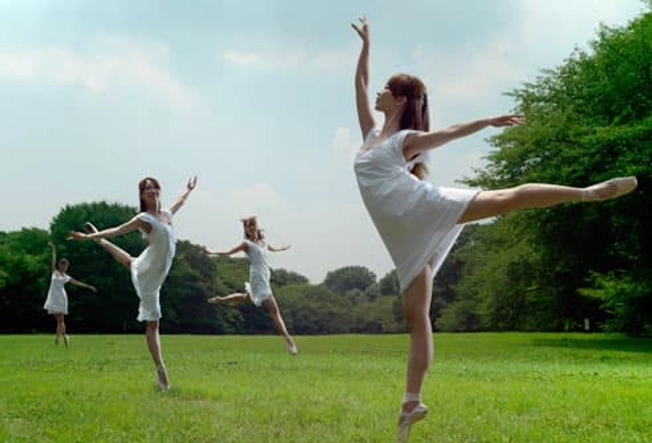
Balance in Action
Dancers and gymnasts constantly use challenging forms of balance. They're often on one leg while performing complex moves and must then come to a full stop. "Everything dancers and gymnasts do involves controlling their body position and balancing, including landing and sticking to it," says Comana.
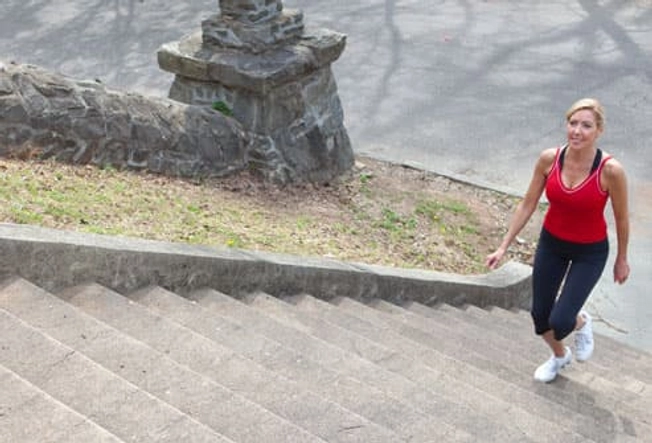
Proprioception and Balance
Balance training fine-tunes the senses that allow you to fly up a flight of stairs without looking at your feet, called proprioception. Receptors in your muscles and skin send messages to your brain, telling you where you are in space. Proprioception also helps prevent injuries during hiking and many other sports. Without good proprioception you'll sprain your ankle more easily, even if you're strong.
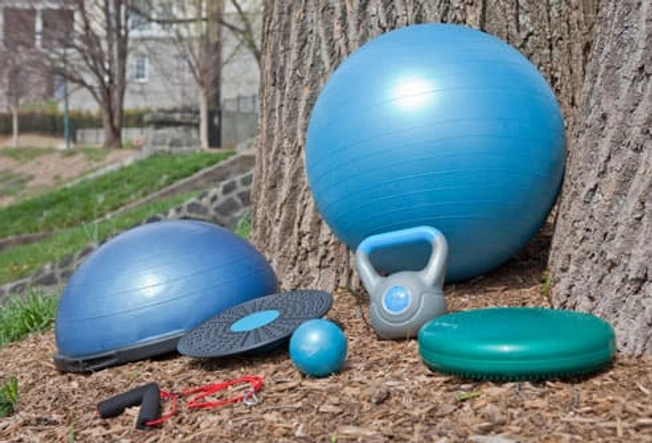
Tools and Toys for Balance
Challenging your balance may be as simple as standing on one leg or closing your eyes. But for added challenge and fun, include balance boards, balance cushions, or sturdy foam rollers. Keep safety in mind at all times: remove objects around you and stand near a wall or stable surface in case you lose your balance.
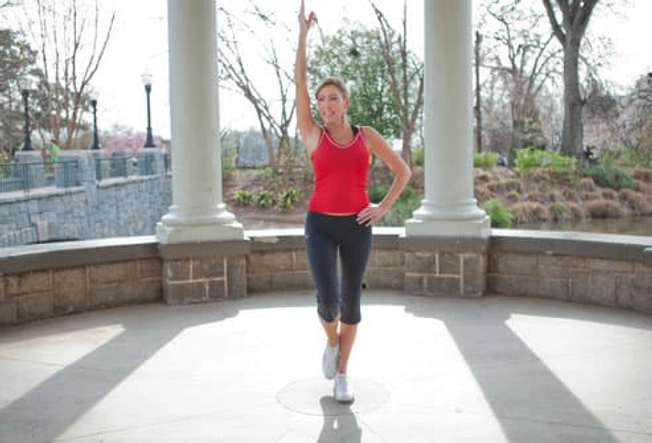
Off-Balance Timing
Perform off-balance exercises at the beginning of your workout before your muscles become fatigued. Progress slowly, starting by standing on both legs, then one leg. Follow by adding arm movements and balance tools only after mastering simpler moves. Balance exercises may and should be done every day for best results.

Off-Balance Life Moves
Carrying a child on one hip, lifting groceries from a car, and many other common activities put the body off balance … and at risk for a low-back injury. Core strengtheners may help you avoid such an injury, as well as a nasty fall. Balance comes into play even with simple everyday moves.
